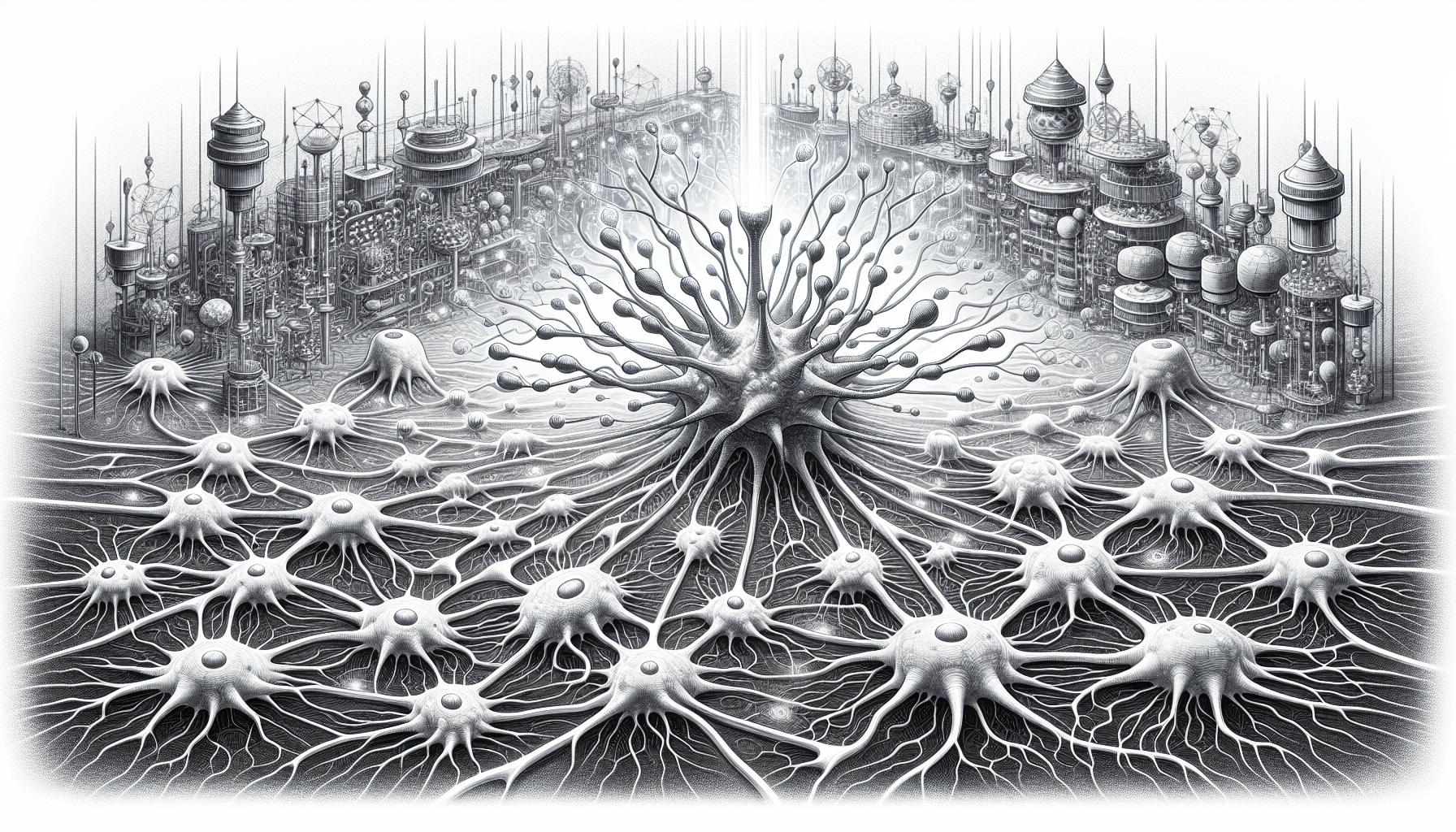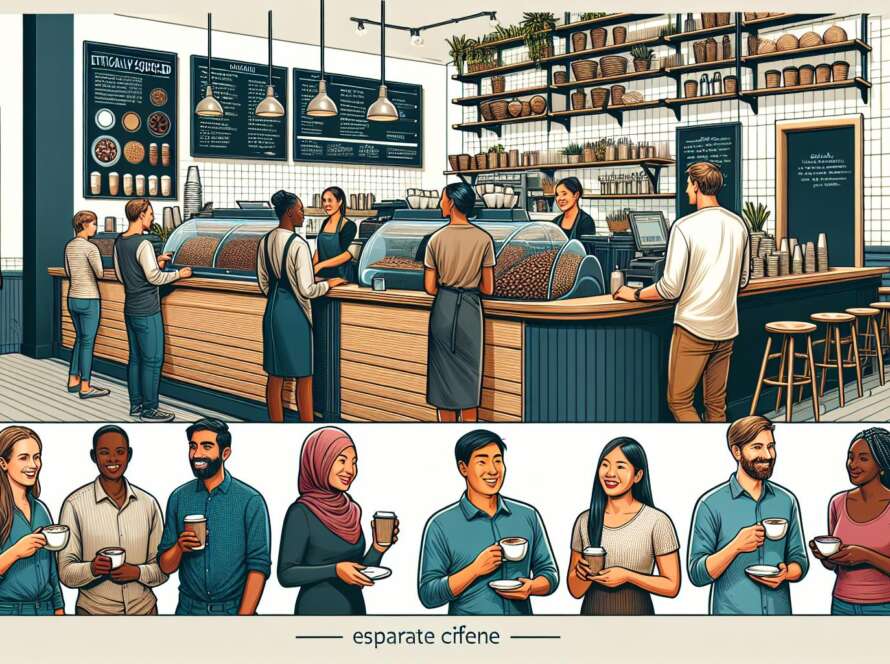Ever dived into a book so deep it felt like exploring another universe? That’s exactly how I felt with Jeff Hawkins’ “A Thousand Brains.” This book isn’t just a read; it’s a journey into the complexities of the human brain, and I’m here to guide you through its twists and turns. Hawkins throws at us a groundbreaking theory of intelligence that could redefine our future, and I’m all in for breaking it down for you.
Why me, you ask? Well, I’ve spent years untangling the knots of neuroscience and artificial intelligence for my readers. My knack for simplifying the complex, coupled with a background in cognitive science, makes me your go-to guide for this adventure. Trust me, when it comes to brainy stuff, I’m your guy.
Let’s talk takeaways. First off, Hawkins introduces us to a revolutionary perspective on how our brains work, which is a game-changer. Then, there’s the bit on how this understanding could lead to smarter AI, something I’ve been geeking out over for years. And lastly, the implications for our future are just mind-blowing. Stick around, and let’s unravel the mysteries of “A Thousand Brains” together.
Overview of Jeff Hawkins’ Groundbreaking Theory of Intelligence
As I dove deeper into Jeff Hawkins’ “A Thousand Brains,” one idea that consistently blew my mind was his theory of intelligence. Hawkins suggests that the brain operates not as a single unit but as a collection of individual, small “brains” working in parallel. This, in essence, reframes our understanding of how learning and cognition take place.
Unpacking the Mystery: How Our Minds Work
Think about the last time you learned something new, like juggling. Initially, it felt clumsy, right? That’s because, as Hawkins points out, different parts of your brain were trying to synchronize their understanding of juggling. Each “mini-brain” gathered unique data based on its function—some focused on the weight of the balls, others on the trajectory, and some on timing. It’s this collaborative effort that eventually made you improve.
The Power of Predictive Modeling
Hawkins’ theory hinges on a concept he calls predictive modeling. Every mini-brain builds models based on past experiences, which it then uses to predict future outcomes. Remember when you finally got the hang of juggling? That was your brain’s predictive models becoming accurate enough to foresee where the balls would land, allowing your hands to be in the right place at the right time.
Implications for Artificial Intelligence
Here’s where it gets exciting for tech geeks and futurists. Hawkins believes this understanding of the human brain could revolutionize artificial intelligence. By mimicking the brain’s architecture, we could develop AI systems that learn and think in genuinely human-like ways. Just imagine AI that doesn’t just follow commands but understands and anticipates our needs.
A Personal Reflection
When I applied Hawkins’ insights to my day-to-day life, I noticed a shift in how I approached problem-solving. Previously, I’d tackle problems in a linear fashion. Now, I try to engage all parts of my brain, considering multiple angles and possibilities simultaneously. It’s a bit like mental juggling, and while it’s challenging, it’s also incredibly rewarding.
Key Concepts Explored in “A Thousand Brains”

The Power of Parallel Processing
You know, when I first dove into “A Thousand Brains”, one concept that really stuck with me was parallel processing. Jeff Hawkins masterfully explains how our brains aren’t just a single entity crunching numbers but a collection of mini-brains, each running its own simulations. It’s like having a hundred laptops instead of one supercomputer to solve problems. This blew my mind because it explained why I could simultaneously listen to music, jot down notes, and daydream about my next vacation—our brains are multitaskers by nature!
Predictive Modelling and Learning
Then there’s the idea of predictive modelling, which, to be honest, reshaped my entire approach to learning new skills. Hawkins suggests our brains are constantly making predictions based on past experiences. Remember when I tried to learn Italian and kept messing up the conjugations? Understanding that my brain was attempting to predict the patterns helped me be more patient with myself. It wasn’t about memorizing a bunch of rules but letting my brain adjust its internal models.
Reference Frames: The World Through Our Brains
Another intriguing point Hawkins touches on is the concept of reference frames. This idea that each part of our brain perceives the world from its perspective has massive implications. I realized why two people could look at the same situation and see something totally different. It’s not just about opinion; it’s about how our brains are wired to interpret the world.
Embracing a Multi-Perspective Approach to Problem-Solving
As mentioned, these concepts have revolutionized how I tackle problems. Instead of searching for a single solution, I now brainstorm a multitude of angles, mimicking the brain’s parallel processing. For instance, when I was stuck on a project at work, I took a step back and considered it from several departments’ perspectives. This multi-perspective approach led to a breakthrough that wouldn’t have been possible if I’d stuck to my original, singular viewpoint.
Each of these concepts from “A Thousand Brains” not only provides a foundation for understanding our intelligence but also offers a practical guide for enhancing our daily lives. Whether it’s learning a new skill, resolving conflicts, or simply understanding how we think, Hawkins’ insights offer a revolutionary way to approach our brains and, by extension, our world.
Implications of Hawkins’ Theory on Artificial Intelligence

As I’ve dived deep into Jeff Hawkins’ “A Thousand Brains”, I’ve realized its profound implications on artificial intelligence (AI). Hawkins’ ideas on parallel processing and predictive modeling aren’t just fascinating; they’re revolutionary for AI development. Let me break down how this theory is reshaping AI, from my perspective as a self-help enthusiast and a tech geek.
Embracing Parallel Processing in AI
Remember how I mentioned the concept of “mini-brains” working simultaneously? Now, imagine applying that to AI systems. We’re talking about a leap from linear to multi-threaded thought processes. Traditional AI struggles with tasks that humans navigate with ease, like understanding context or handling unpredictability. But by mimicking the brain’s parallel processing, AI could become vastly more capable. Imagine Siri or Alexa understanding not just your words but the context of your entire day. That’s where we’re headed.
Predictive Modeling: The AI Game Changer
Predictive learning, as discussed, uses past knowledge to anticipate future outcomes. For AI, this means not just reacting but predicting. It could transform AI from a tool that responds to commands into one that anticipates needs. Imagine your coffee machine brewing a cup right before you even knew you wanted it. Sounds like a dream, right? Companies are already experimenting with predictive AI in fields like healthcare, predicting patient outcomes with surprising accuracy.
Multi-Perspective Problem Solving in AI
The reference frames idea from “A Thousand Brains” teaches AI to perceive the world from multiple perspectives. This could solve one of AI’s biggest shortcomings: lack of creativity. By understanding and processing different viewpoints, AI could offer solutions we humans might overlook. I’ve already seen AI doing this in creative fields, suggesting designs that blend wildly different styles into something new and innovative.
- AI in Healthcare Diagnosis: Faster and more accurate diagnoses by analyzing data from thousands of cases and medical literature.
- Smart Homes: Appliances that predict and adapt to your schedule, improving energy efficiency and convenience.
- Autonomous Vehicles: Cars that predict potential hazards by understanding complex environments in real-time.
The Future Impact of “A Thousand Brains”

As a self-help enthusiast and someone deeply fascinated by the intersection of technology and personal development, I’ve been closely following the repercussions of Jeff Hawkins’ groundbreaking work in “A Thousand Brains.” It’s not just a book—it’s a gateway to the future of artificial intelligence (AI) and how it’ll transform our lives.
AI’s Leap into Emotional Intelligence
One striking prediction from Hawkins is the evolution of AI’s emotional intelligence. I remember meeting an AI chatbot a few years back; it was as if I was talking to a brick wall. But applying Hawkins’ theories, I can foresee a future where AI understands context and emotion just like a close friend would. Imagine your smart home recognizing a tough day at work and playing your favorite soothing playlist as you walk in. That’s the kind of personalized interaction we’re heading towards.
Revolutionizing Healthcare with Predictive AI
84% of healthcare professionals believe AI can revolutionize patient outcomes, according to a recent survey. Drawing from “A Thousand Brains,” AI’s predictive capabilities could lead to breakthroughs in personalized medicine. Picture a world where your smartwatch not only tracks your steps but predicts potential health issues based on your daily activity and genetic predispositions. It’s like having a doctor on your wrist, offering advice and alerting you to potential health risks before they become serious.
Transforming Education Through Customized Learning Paths
Remember struggling with one-size-fits-all education systems? Hawkins’ concepts promise a shift towards AI-powered personalized learning. By understanding a student’s unique learning style and pace, AI can tailor educational content, making learning more efficient and enjoyable. I once tutored a student who simply couldn’t grasp mathematics through conventional methods. With AI based on Hawkins’ theories, students like her could thrive, receiving learning materials that adapt to their individual needs and capabilities.
Driving Innovation in Sustainable Practices
Sustainability is another area ripe for transformation. Hawkins’ model of AI offers a brilliant approach to crunching vast amounts of environmental data, helping predict climate patterns and offering solutions to mitigate adverse effects. This means smarter resource management and inventive ways to reduce our carbon footprint. I’ve seen startups use early versions of this AI to optimize energy use in buildings, suggesting that a larger-scale application could drastically change how we approach sustainability.
Conclusion
Diving into “A Thousand Brains” by Jeff Hawkins has been an eye-opening journey. It’s fascinating to see how Hawkins’ ideas could shape the future of AI, from making it more emotionally intelligent to revolutionizing healthcare, education, and sustainability. The thought of AI that can understand our moods and needs, tailor learning experiences, and even predict health issues is incredibly exciting. Plus, the potential for AI to drive sustainable practices gives me hope for a greener future. Hawkins’ work really makes you think about the endless possibilities AI holds. Can’t wait to see how these concepts unfold in the real world!
Frequently Asked Questions
What is Jeff Hawkins’ contribution to artificial intelligence?
Jeff Hawkins has significantly contributed to AI, particularly through his “A Thousand Brains” theory, which has opened up new possibilities for developing AI with enhanced capabilities like emotional intelligence and advanced predictive functionalities.
How could AI potentially change healthcare according to the article?
The article suggests that AI, inspired by Jeff Hawkins’ work, could revolutionize healthcare by enabling predictive personalized medicine. This involves the use of devices like smartwatches to monitor health and predict medical needs on an individual basis.
Can AI improve education?
Yes, the article discusses how AI could transform education by customizing learning paths to suit individual students’ needs and learning styles. This would potentially make education more effective by addressing students’ specific requirements.
What role does AI have in sustainable practices?
AI, guided by Jeff Hawkins’ model, holds significant promise in driving innovation in sustainable practices. It can help predict climate patterns and optimize resource management, contributing to a more sustainable future.
How can AI understand and respond to human emotions?
The article explores the potential for AI to develop emotional intelligence, enabling AI systems to recognize human moods and provide responses tailored to those emotional states, making interactions more personalized.


